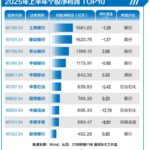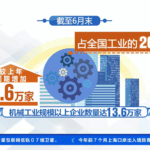The cross-border e-commerce industry is shifting from “traffic competition” to a comprehensive competition of “supply chain + technology.”
On August 6, Amazon announced at the “2025 Amazon Global Selling Growth Forum” held in Shenzhen that it is upgrading its supply chain solutions, product selection tools, and brand services. These enhancements include logistics network expansion, AI technology applications, and full-chain operational support, aiming to improve supply chain efficiency and global market competitiveness for cross-border sellers.
Industry experts believe that the “Supply Chain as a Service (SCaaS)” model is becoming increasingly prevalent, transforming cross-border supply chains from traditional “cost centers” into “core drivers” of business growth.
Many cross-border e-commerce platforms are intensifying their supply chain investments to gain a competitive edge in this silent battle.
Dual Upgrades in Supply Chain and AI Applications
On August 6, Amazon Global Logistics (AGL) officially launched a China-Japan cross-border ocean freight service, covering full-container (FCL) and less-than-container (LCL) shipments from ports like Shanghai and Ningbo, directly delivering to Amazon’s Japan fulfillment centers. Meanwhile, Amazon Warehousing & Distribution (AWD) plans to add two new warehouses in the western U.S. to expand storage capacity and optimize inventory placement, helping sellers prepare for peak season demand.
Amazon’s Smart Supply Chain Managed Service (AMS) now offers end-to-end cross-border supply chain management, allowing sellers to choose from AGL, Amazon SEND, AWD, or combined services. The AGL Split Inventory Placement (SMP) program now covers five major U.S. regions, and pickup services have expanded to four additional cities, extending the network to over 200 cities nationwide.
In addition to supply chain upgrades, Amazon is enhancing generative AI applications for product selection. Its Opportunity Explorer now includes a beta feature that automatically generates market analysis reports, covering trends, product features, customer reviews, and pricing insights, significantly reducing data analysis time.
Amazon’s Product Opportunity Explorer and Opportunity Explorer are available in major markets like the U.S., Europe, Japan, and the Middle East. Additionally, its Global Brand Accelerator tool automatically translates brand content into target market languages, reducing globalization costs.
Industry analysts note that this “AI + supply chain” ecosystem could significantly increase seller loyalty. For small and medium-sized sellers, building logistics and data analysis capabilities is highly challenging, making Amazon’s integrated services an attractive “infrastructure outsourcing” solution that allows them to focus on products.
This may further solidify Amazon’s platform advantages, differentiating it from independent stores and niche platforms—those unable to match its supply chain efficiency or tech tools may face seller attrition.
Amazon Global Selling data shows that it has opened 20 overseas marketplaces to Chinese sellers, serving hundreds of millions of active users and over six million business buyers. The latest supply chain and product selection upgrades aim to further boost Chinese sellers’ global expansion efficiency.
Cross-Border E-Commerce Platforms Invest in Supply Chains
Amid global trade fluctuations, building resilient supply chains has become critical.
The “2025 Global Cross-Border E-Commerce Supply Chain Trends Report” indicates that cross-border logistics have evolved from simple transportation services to integrated warehousing, distribution, and network coordination. Logistics and storage costs account for 15%-20% of total operating expenses, second only to product costs, making them key profit determinants.
Consumer data highlights supply chain efficiency’s importance: over 50% of global shoppers prioritize “free shipping,” while more than 30% value “return policies” and “next-day delivery.” Supply chain performance directly impacts sales conversion, turning it from a “cost factor” into a “growth driver” and a core competitive advantage.
Industry observers note that the SCaaS model is gaining traction, with cross-border supply chains transitioning from cost centers to growth engines.
Platforms like Temu have partnered with DHL to adopt a “local-to-local” business model, improving logistics efficiency. This year, Temu established a local warehouse in South Africa, significantly reducing delivery times for local goods.
SHEIN has invested billions in domestic supply chains, expanding its smart logistics network across the Greater Bay Area, including Guangzhou, Foshan, Zhaoqing, and Jiangmen.
Shopee is focusing on localized fulfillment, with official warehouses now covering Thailand, Vietnam, Singapore, the Philippines, and Malaysia. Its “main warehouse + satellite warehouse” system aims to achieve 99% last-mile coverage in Southeast Asia by year-end.
Experts suggest that platforms are prioritizing supply chains for cost control, demand forecasting, and user experience—especially under
Amazon Global Selling Growth Forum
Amazon Global Logistics (AGL)
Amazon Warehousing & Distribution (AWD)
Amazon’s Smart Supply Chain Managed Service (AMS)
Opportunity Explorer
Global Brand Accelerator
(Note: If referring to a *specific* accelerator, additional details about its founding or notable successes could enhance the summary.)




